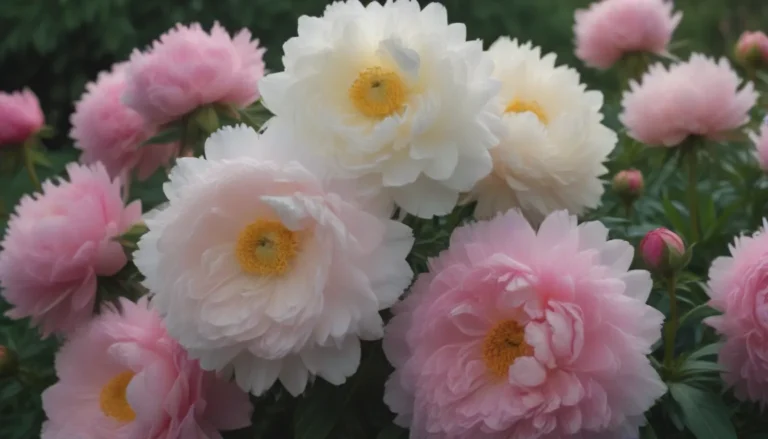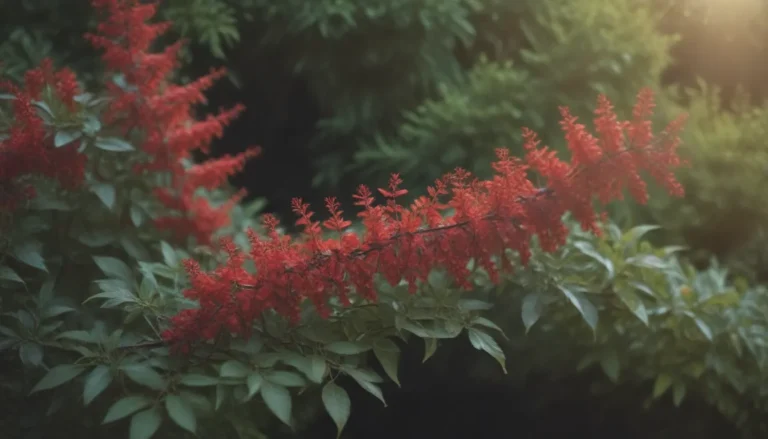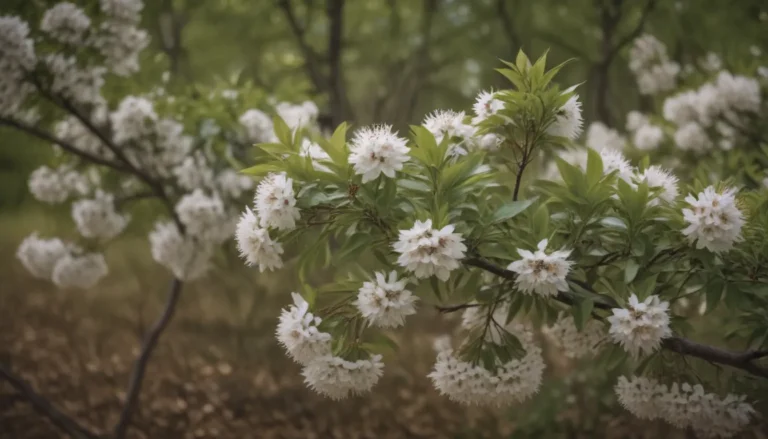How to Grow and Care for Doublefile Viburnum Shrubs: A Comprehensive Guide

Are you looking to add a touch of elegance and beauty to your garden or landscape? Look no further than the doublefile viburnum (Viburnum plicatumf.tomentosum ‘Mariesii’). This medium-sized deciduous shrub, reaching heights of 8 to 16 feet, is a stunning addition to any outdoor space. With its white blooms in the spring, dark green leaves turning burgundy red in the fall, and attractive red berries, the doublefile viburnum is a showstopper.
In this comprehensive guide, we will explore everything you need to know to successfully grow and care for doublefile viburnum shrubs. From planting to pruning, from soil requirements to common pests, we’ve got you covered. Let’s dive in and learn all about this beautiful shrub that is a favorite in North American gardens.
Doublefile Viburnum Shrub Care
Planting and caring for doublefile viburnum shrubs is relatively easy, making them a popular choice for many gardeners. Here are some essential care tips to ensure your shrubs thrive:
-
Planting: Doublefile viburnum thrives in well-drained, consistently moist soil. Plant it in full sun for the best results, although it can tolerate some shade. If you have clay soil, amend it with compost to improve drainage.
-
Pruning: When pruning is necessary to shape or control the size of the shrubs, do it immediately after flowering. This protects the next year’s flowers and berries, which are a favorite among birds.
-
Light: Grow doublefile viburnum in full sun to part shade locations, with full sun producing the best flowering.
-
Soil: This shrub prefers well-drained, loamy, slightly acidic soil. It does well with other acid-loving plants like azaleas and rhododendrons.
-
Water: Keep doublefile viburnum consistently moist, especially during its growing season. Once the shrub is mature, it can tolerate dry conditions.
-
Temperature and Humidity: Doublefile viburnum prefers moderate climate conditions and may not do well in intense heat. Protect it from extreme temperatures to prevent frost damage.
-
Fertilizer: Apply a balanced, time-release fertilizer mixed into the soil in spring, following the product label instructions.
Types of Viburnum
The viburnum genus includes a wide variety of species, each with its own unique characteristics. Some good choices for your garden include:
- Witherod viburnum (Viburnum cassinoides)
- Golden wayfaring tree (Viburnum var. lantana ‘Aureum’)
Doublefile Viburnum vs. Japanese Snowball Bush
A close relative of the doublefile viburnum is the Japanese snowball bush (Viburnum plicatum), with the primary difference being the shape of the flowers. While doublefile viburnum has flat clusters of flowers, the snowball bush features round, full “snowball” blooms. There are also cultivars of the Japanese snowball bush with pink or pink and white blooms.
Pruning and Propagating Doublefile Viburnum
Pruning doublefile viburnum immediately after flowering allows the shrub to develop the growth needed for the next year’s blooms. When rejuvenation is necessary, start by eliminating any stems that rub together and remove a third of all stems. Additionally, remove any water sprouts or suckers at ground level.
When propagating doublefile viburnum, it’s best to use softwood cuttings rather than growing from seed. Take cuttings in spring through July when new growth is present on the branch tips. Doublefile viburnum requires a bit of care in zones 5 and 6 during the winter, as they are shallow-rooted plants and can be susceptible to frost. Adding a layer of mulch and protecting the plant from extreme weather can help them survive the winter months.
Common Pests and Problems
While doublefile viburnum is relatively pest-resistant, it may still face issues like viburnum leaf beetles and aphids. Keep an eye out for any signs of pests and treat them promptly. To prevent disease problems, avoid overhead irrigation and maintain good air circulation around the shrubs.
If you notice spots on the leaves or white or grayish growth, your viburnum may have fungal issues like powdery mildew or downy mildew. Remove infected leaves, clean up the area, and use fungicide sprays to control the situation. With proper care and maintenance, your doublefile viburnum shrubs will reward you with their exquisite beauty year after year.
How to Get Doublefile Viburnum to Bloom
To ensure your doublefile viburnum shrubs bloom to their full potential, consider the following tips:
-
Sunlight: These plants thrive in full sunlight. Lack of sunlight can inhibit blooming.
-
Pruning: Prune your shrubs immediately after flowering to allow for the development of new growth for the next year.
-
Fertilization: Avoid over-fertilizing with nitrogen, as this can lead to more foliage and fewer blooms. Opt for a balanced, slow-release fertilizer suitable for acid-loving plants.
By following these simple steps, you can encourage your doublefile viburnum shrubs to bloom beautifully year after year.
In Conclusion
Doublefile viburnum shrubs are a wonderful addition to any garden or landscape. With their stunning blooms, attractive foliage, and low maintenance requirements, they are a popular choice among gardeners. By following the care tips outlined in this guide, you can ensure that your doublefile viburnum shrubs thrive and bring beauty to your outdoor space for years to come. Whether you are a seasoned gardener or a novice, growing and caring for these exquisite shrubs is a rewarding experience that will enhance the beauty of your garden. Happy gardening!





